What is washer?
A Washer is a disk-shaped thin plate with a center hole. They are used to distribute the load over a relatively larger area. Application of washers Includes Spacers, Springs, pre-loading screws, and vibration reduction. This article covers various types of washers and their application.
We suggest you also read this article on line-balancing in manufacturing.
A Washer is a standard part radially available in the market. According to the required specifications, you can select an off-the-shelf washer. Most washers are available in the market according to the following standards.
Here is the list of applicable standards used to manufacture a washer. You can refer to these standards for more details on washers.
Types of Washer
Here are the three different types of washers according to their construction and applications.
- Plain Washer
- Spring Washer
- Lock Washer
1) Plain Washer: Type of Flat Washer
Plain Washers distribute the load in a relatively larger area. Therefore they prevent damage to the assembled surfaces. the following types of plain washers are available in the market.
- Flat Washer
- Fender Washer
- Shoulder Washer
- C-Washer
- Countersunk Washer
Flat washer / Type-A plain washer
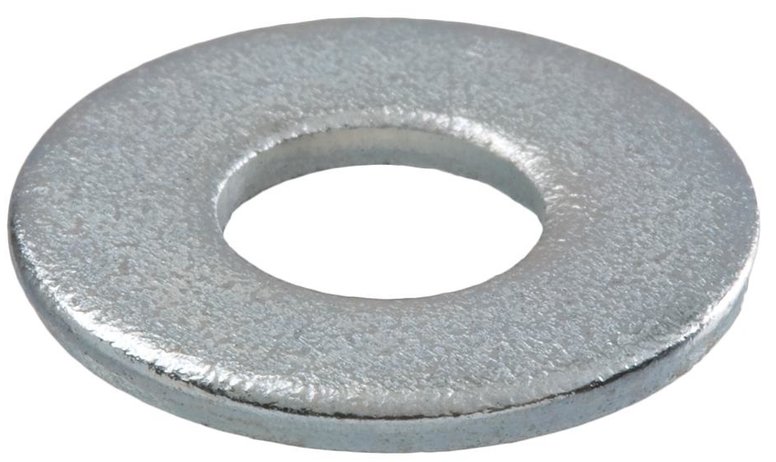
Flat Plain Washers are thin, flat circular washers with a central hole. They have applications to distribute the load to a relatively larger area and provide support to the small head screws.
Fender washer
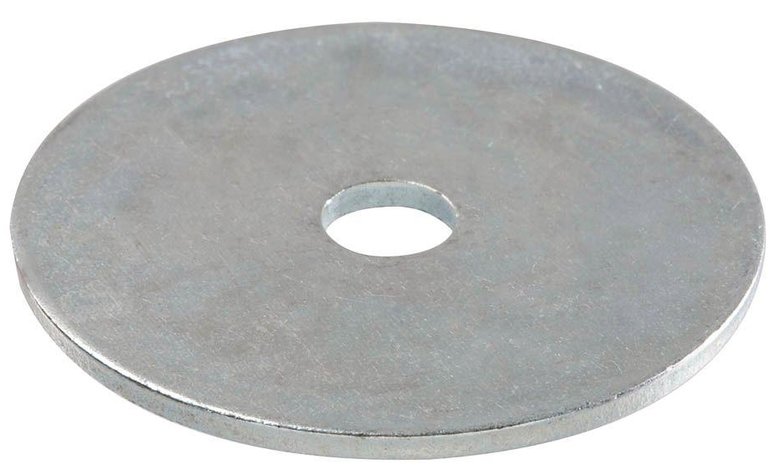
Fender Washers have a larger outside diameter as compared to the inside diameter. Therefore fender washers distribute the load to a relatively larger area when compared to flat washers.
Fender Washers have applications in automobiles, plumbing, sheet metal, electrical applications, attaching signboards, panels, and drywall.
Shoulder Washer
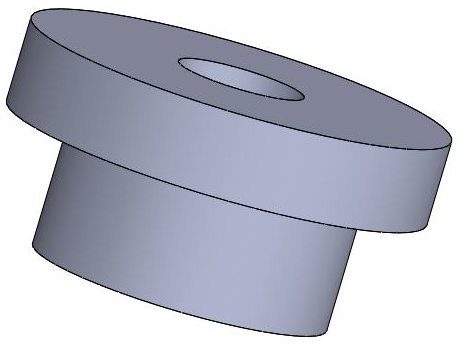
Shoulder washers have a shoulder-type structure. They are used to insulate screws, wire, or any other part from the rest of the assembly. Shoulder washers are available in fiber-glass, phenolic, nylon, PCTFE, PTFE, and metals.
C-Washer
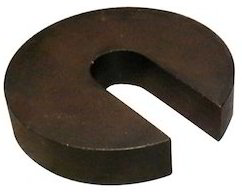
C- Washer design is to slide in and out of position on a bolt or shaft.
Countersunk Washer
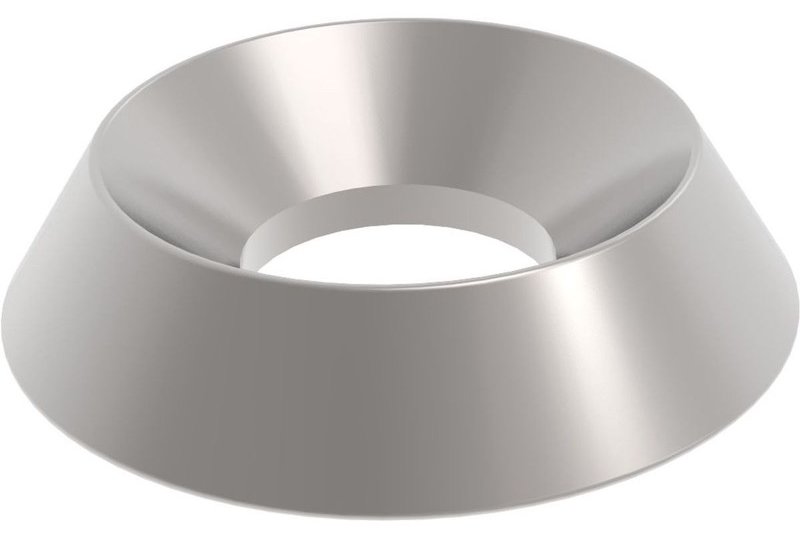
The Countersunk washer has a 90° or 120° countersunk on the top surface to provide a flush surface for countersunk screws. Therefore these washers work as a flat washer for flat head countersunk screws.
2) Spring washer: Types of washers with axial Load
Spring washers provide an axial load to fasteners during vibration or shock. Therefore it helps in keeping the nut and bolt in tightened condition. The following types of spring washers are available in the market.
Belleville / Conical Spring Washer
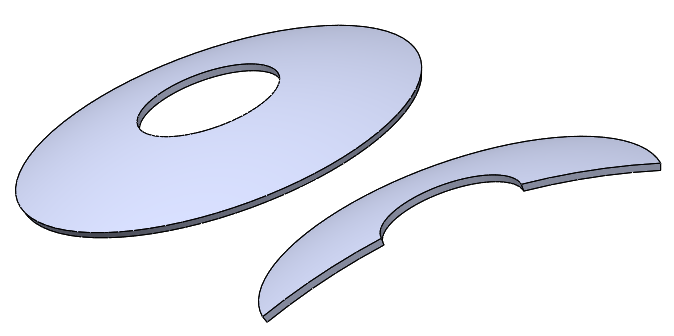
Belleville or conical spring washers keep an assembly in tension during thermal expansion and contraction conditions. This type of spring washer supports a very high load with small deflection. Conical washer load-deflection characteristics depend on its height and thickness ratio.
Curved Spring Washer
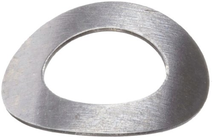
Curved spring washer supports relatively small loads and a wide deflection range. This type of spring washer provides a uniform spring rate over the deflection range and has linear load-deflection characteristics. Curved spring washers have applications in flexible and load-cycling products.
Dome Spring Washer
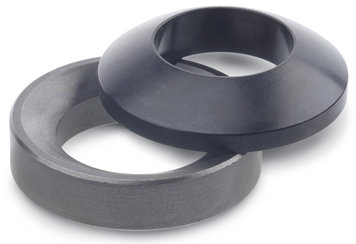
Dome spring washers have very high load capacity with a relatively small deflection range. They have ground curves to create a flatter load-bearing surface.
Finger Spring Washer
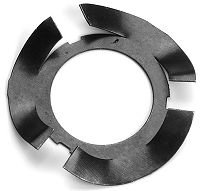
Finger Spring Washers application is to counteract noise, excess wear, vibrations, and reducing skidding wear on rotating elements.
These washers are manufactured from carbon steel. Finger spring washers combine the flexibility of a crescent washer with the distributed load points of a wave washer.
Wave Spring Washer
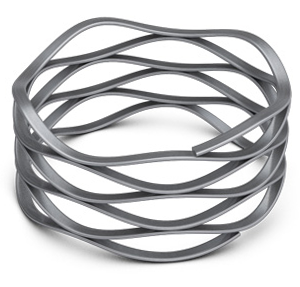
Wave Spring Washers have moderate load capacity and deflection range. They work as cushion springs or spacers on a shaft.
3) Locking washers
Locking Washers is a type of spring washer. It prevents fasteners loosening by preventing unscrewing rotation. Lock washers secure fasteners that tend to rotate or lose friction. Following types of locking washers are available in the market.
External tooth Lock Washer
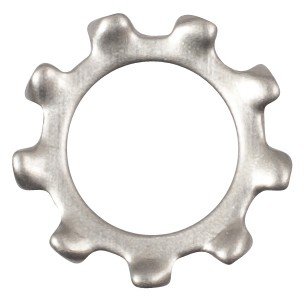
External tooth lock washer prevents a nut or bolt head from loosening using teeth strut action. They work best with larger head screws.
The external Tooth lock washer type provides maximum torsional resistance when the teeth bite into a mating surface and resist compression force.
Internal Tooth Lock Washer
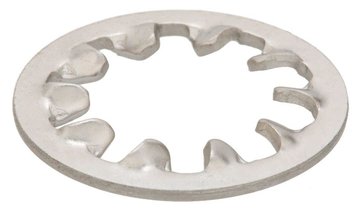
An internal tooth lock washer prevents a nut or bolt head from loosening using teeth strut action. Washer teeth also absorb shock and vibration.
Helical / Split Lock Washer
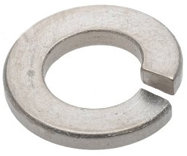
A helical spring lock washer increases the preload on screws during tightening. Increased preload protects the screw against loosening during vibration and corrosion.
Frequently Asked Questions on Washers: FAQ
Plain washers are used with screws to distribute screw load over a relatively larger area.
And Locking washers are used with screws to ensure screws do not come out during vibrations or other loading conditions.
Fender plain washers can give better results because they distribute screw force at a relatively larger area.
Try different locking washers. Use Loctite or other adhesive to lock the screw in its position if the problem persists.
It depends on your application, material used on the nut or bolt side. If design permits flat washer on both sides can give good results.
It’s really difficult to answer this question straight-way. The best practice is to validate the design with or without a lock washer.
To sum up, various types of washers are available in different materials. Each washer type has its application. You need to select washers as per design requirements and application. You can check more details on washers from the manufacturer’s website. ( Bossard, PV Fasteners, etc.)
We will keep adding more information on different types of washers and their applications. Add your comments or questions on types of washes and their uses in the comment box. We suggest you also read this article on various types of screwdrivers.

Sir tab washer is use there/apply? Lock nut (bolt) or vibration pls. Replay soon may Q.
Hi mohan, thanks for highlighting this.
Internal/external tab washers are a type of lock washers. Tab washers locks the bolt in a position in a condition of high vibrations. Please let me know if i answered your question.
Hi Sir,
Is it good to use both flat washer and spring washer together for mounting cable lug.
Hi,
Is it good to use both flat washer and spring washer together for mounting cable lug
or else only spring washer is enough.
Thanks and Regards
Ranga